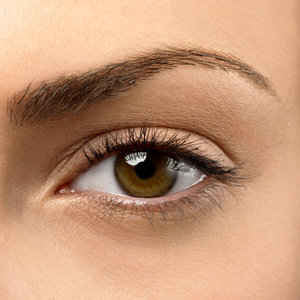 What is a corneal abrasion?
What is a corneal abrasion?
A corneal abrasion is a cut or scratch on your cornea. The cornea is a clear layer of protective tissue at the front of your eye that lies over the iris (which is the colored part of your eye). The cornea helps focus light.
What can cause a corneal abrasion?
A corneal abrasion can occur when something gets into your eye, such as sand, dust, dirt, and wood or metal shavings. The cornea can also be scratched by a fingernail, a tree branch or a contact lens that is dry or dirty. Rubbing your eyes very hard is another way that an abrasion can occur.
In some people, the outer layers of the cornea are weak. These people may get a corneal abrasion for no apparent reason.
How do I know if I have a corneal abrasion?
The cornea is very sensitive, and a corneal abrasion is usually quite painful. You may feel like you have sand or grit in your eye. You may notice tears or blurred vision, or your eye may look red. You may also notice that light hurts your eye. Some people get a headache when they have a corneal abrasion.
What do I do if I get something in my eye?
If you think something has gotten into your eye, first try to wash out the eye by flushing it with clean water or saline solution. Your workplace may have an eye rinse station for this purpose. Sometimes, blinking or pulling the upper eyelid over the lower eyelid may remove a particle from under the eyelid. Avoid rubbing your eye. If you or someone else notices something on the white part of your eye, use a soft tissue or cotton swab to gently lift it out of the eye. Don’t try to remove something that is directly over the cornea — this might cause more serious damage. Call your doctor if you can’t remove the particle or if there doesn’t seem to be anything in your eye.
What will my doctor do for a corneal abrasion?
Your doctor will examine your eye for any damage or particles that may be trapped under your eyelid. A yellow-orange dye may be placed on your eye to help your doctor see the abrasion. Your doctor will probably treat the abrasion with eye drops or ointment. Most small abrasions heal within one to three days. You may need to return to your doctor for another exam the next day.
What if I wear contact lenses?
If you wear contact lenses, you need to be especially careful with a corneal abrasion because you have a higher risk of infection. Your doctor may tell you not to wear your contact lenses for a few days after a corneal abrasion, especially if you’re treating your eye with medicated drops.
How can I prevent corneal abrasion?
Take the following steps to help prevent corneal abrasions:
- Wear protective eye goggles when you’re around machinery that causes particles of wood, metal or other materials to fly into the air (such as a chainsaw or a sandblaster).
- Keep your fingernails trimmed short. Cut infants’ and young children’s fingernails short, also.
- Trim low-hanging tree branches.
- Use care when putting in contact lenses, and make sure you clean them properly each day.
- Don’t sleep in your contact lenses.
http://familydoctor.org/familydoctor/en/prevention-wellness/staying-healthy/first-aid/corneal-abrasions.html
 When you go to “get your eyes checked,” there are a variety of eye care providers you might see. Ophthalmologists, optometrists and opticians all play an important role in providing eye care services to consumers. However, each group has different levels of training and expertise; you should be sure you are seeing the right provider for your condition or treatment.
When you go to “get your eyes checked,” there are a variety of eye care providers you might see. Ophthalmologists, optometrists and opticians all play an important role in providing eye care services to consumers. However, each group has different levels of training and expertise; you should be sure you are seeing the right provider for your condition or treatment.